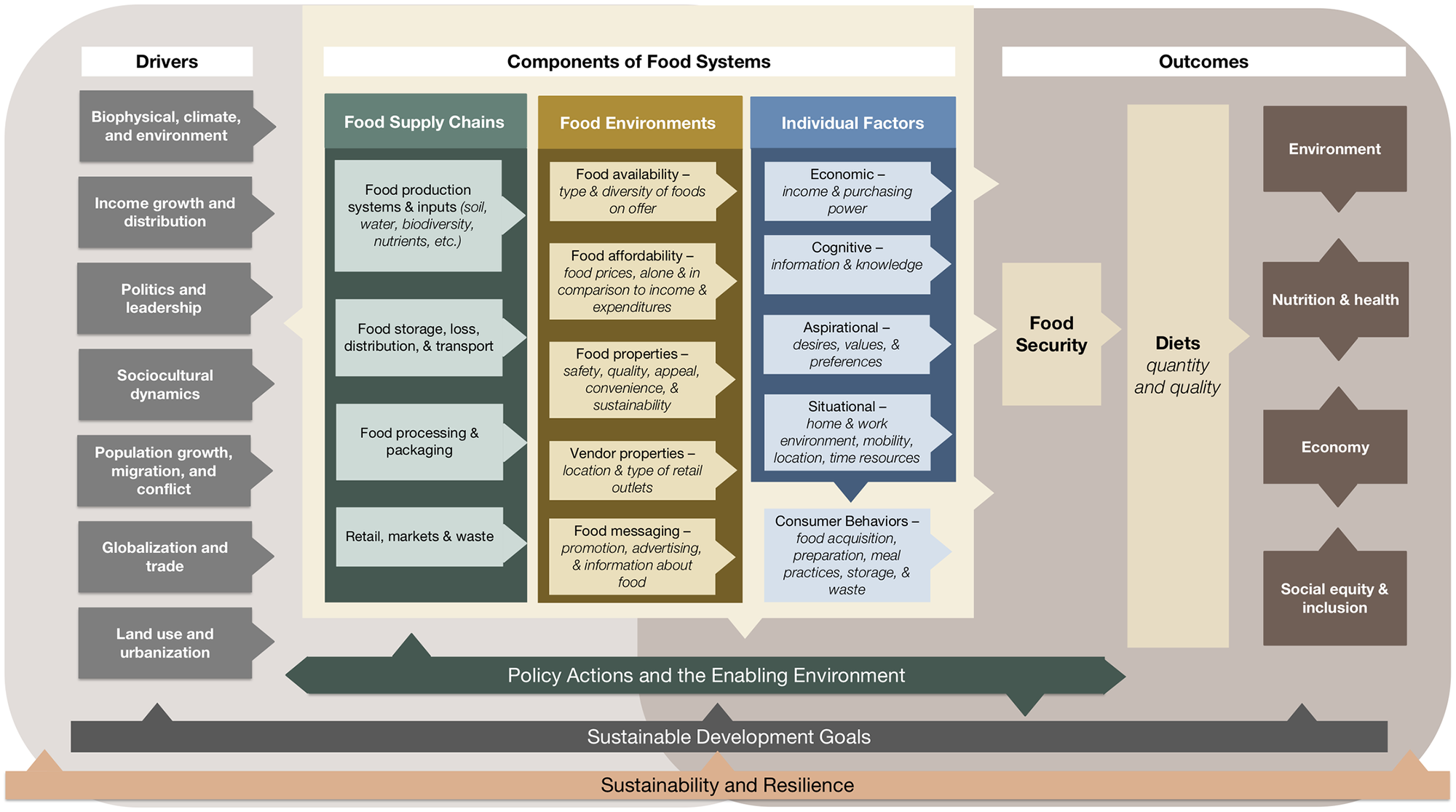13 Sep Diagnosing food system performance
A previous SNippet discussed the usefulness of the Food Systems Dashboard: a visualisation tool for food systems. In a recent publication, this data has now been matched to a set of sustainability indicators, to allow the performance of national food systems to be assessed against diverse criteria.
Indicators include metrics for crop diversity and supply chain loss; food availability, affordability, and security; nutritional intake, status and non-communicable disease burden; and environmental impacts of both food production and consumption. Optimal ranges or limits are set for each indicator, and data from international agencies is used to calculate how countries perform against these.
The authors applied their diagnosis to data from 195 countries. High-income countries performed poorly on several per capita environmental indicators, as well as on the relative cost of fruit, vegetables and healthy diets, while performing well on nutritional outcomes (excluding obesity) and supply chain indicators. Lower-income countries generally showed the opposite trends.
Several surprising results did appear, both at the income classification and country levels. For example, adult raised blood pressure was most prevalent in lower income countries, and diabetes in upper-middle income countries, rather than high-income. Outlier country indicators included surprisingly high losses of fruits or vegetables in Japan, Korea, and Greece, while the Maldives showed a lower affordability of a healthy diet than comparable income countries.
The approach utilises a huge, combined dataset for hundreds of outcome variables, making it a useful tool to look at current state and change over time. In combination with future scenario thinking, these tools can be used to direct positive change to food systems to improve multiple sustainability criteria.
Image: Food Systems Framework from the paper Diagnosing the performance of food systems to increase accountability toward healthy diets and environmental sustainability.






